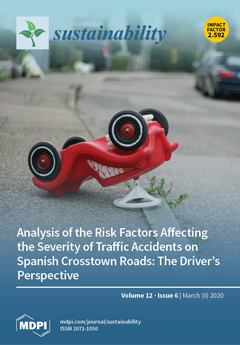Open AccessEditor’s ChoiceArticle
Strategies for Sustainable and Circular Management of Phosphorus in the Baltic Sea Region: The Holistic Approach of the InPhos Project
by
Marzena Smol, Michał Preisner, Augusto Bianchini, Jessica Rossi, Ludwig Hermann, Tanja Schaaf, Jolita Kruopienė, Kastytis Pamakštys, Maris Klavins, Ruta Ozola-Davidane, Daina Kalnina, Elina Strade, Viktoria Voronova, Karin Pachel, Xiaosheng Yang, Britt-Marie Steenari and Magdalena Svanström
Cited by 23 | Viewed by 5365
Abstract
Despite the significant reduction of phosphorus (P) discharge in the Baltic Sea in the last decades, obtained through the implementation of some approaches within the Helsinki Convention, eutrophication is still considered the biggest problem for the Baltic Sea environment. Consequently, the reduction of
[...] Read more.
Despite the significant reduction of phosphorus (P) discharge in the Baltic Sea in the last decades, obtained through the implementation of some approaches within the Helsinki Convention, eutrophication is still considered the biggest problem for the Baltic Sea environment. Consequently, the reduction of P load is an urgent need to solve, but the complexity of both the environmental and legislative context of the area makes this process difficult (more than in the past). Eutrophication is an intricate issue requiring a proper framework of governance that is not easy to determine in the Baltic Sea Region where the needs of several different countries converge. To identify the most suitable strategy to reduce the eutrophication in the Baltic Sea, the InPhos project (no. 17022, 2018–2019, funded by the European Institute of Innovation & Technology (EIT) Raw Materials) adopted a holistic approach considering technical, political, economic, environmental and social aspects of P management. With the aims to raise awareness about the P challenge, foster the dialogue among all the stakeholders, and find solutions already developed in other countries (such as Germany and Switzerland) to be transferred in the Baltic Sea Region, the InPhos project consortium applied the methodology proposed in this paper, consisting of three main phases: (i) analysis of the available technologies to remove P from waste streams that contribute to eutrophication; (ii) analysis of the main streams involving P in Baltic Sea countries to highlight the potential of more sustainable and circular P management; (iii) study of the current context (e.g., already-existing initiatives and issues). This approach allowed us to identify four categories of recommendations and practical actions proposed to improve P management in the Baltic Sea region. During the project, the consortium mainly addressed social aspects. Following steps beyond the project will be more quantitative to determine the techno-economic feasibility of circular P management in selected demo cases in the region.
Full article
►▼
Show Figures





